best video game designer online school
Best online learning platforms of 2021

The best online learning platforms make it a snap for educators and trainers to manage course materials online.
Learning Management Systems (LMS) and Virtual Learning Environments (VLE) have become increasingly common, especially due to the sweeping educational changes that became necessary due to the pandemic.
While face-to-face learning has a place, increasingly learning and courses are being conducted through digital channels. This can be both cheaper and easier to manage for businesses, and also for educators it translates to being able to reach people from a distance.
In a remote situation is where online learning platforms really come to the fore, as platforms for education make the most of modern technology. That's not to say traditional means of education are about to be extinct, but academic institutions and businesses have identified that we can achieve plenty more through tech, such as smartphones and other internet-connected devices which can facilitate learning from any location.
Online learning platforms have become more diverse, so to learn a language, you can use language learning apps and online flashcards, and for younger ones, there are e-learning online classroom services as well. Additionally, there are coding platforms for schools as well.
Through digital means, learning is on tap. It doesn't take long to find out a fact, or to develop a specific skill. The way training organizations and educators create courses is also dramatically changing. In this article, we're looking at the best learning management software tools available right now.
How we chose the best online learning platforms
There are plenty of choices in the online learning management software area, so there is sure to be one well suited for each organization.
A major differentiator is price. Some LMS' are available for free, or have a low cost entry tier. Others offer more features, but at a higher price point. Pricing models are also different with some providers charging only by each student, while others having the price based on the plan, and then a lower additional cost for each additional learner.
Another feature to look for are the mobile apps. Especially younger learners value these apps so that a learner can engage in education from anywhere, at any time. Be sure that the apps are available for both of the mobile platforms- Android and iOS. Also, check the ratings of the apps in their respective stores, as just because an app is available it may not be a great one with some low rated, glitchy ones out there.
For schools and students we've also featured:
- Best laptops for schools
- Best Chromebooks for schools
- Best tablets for schools

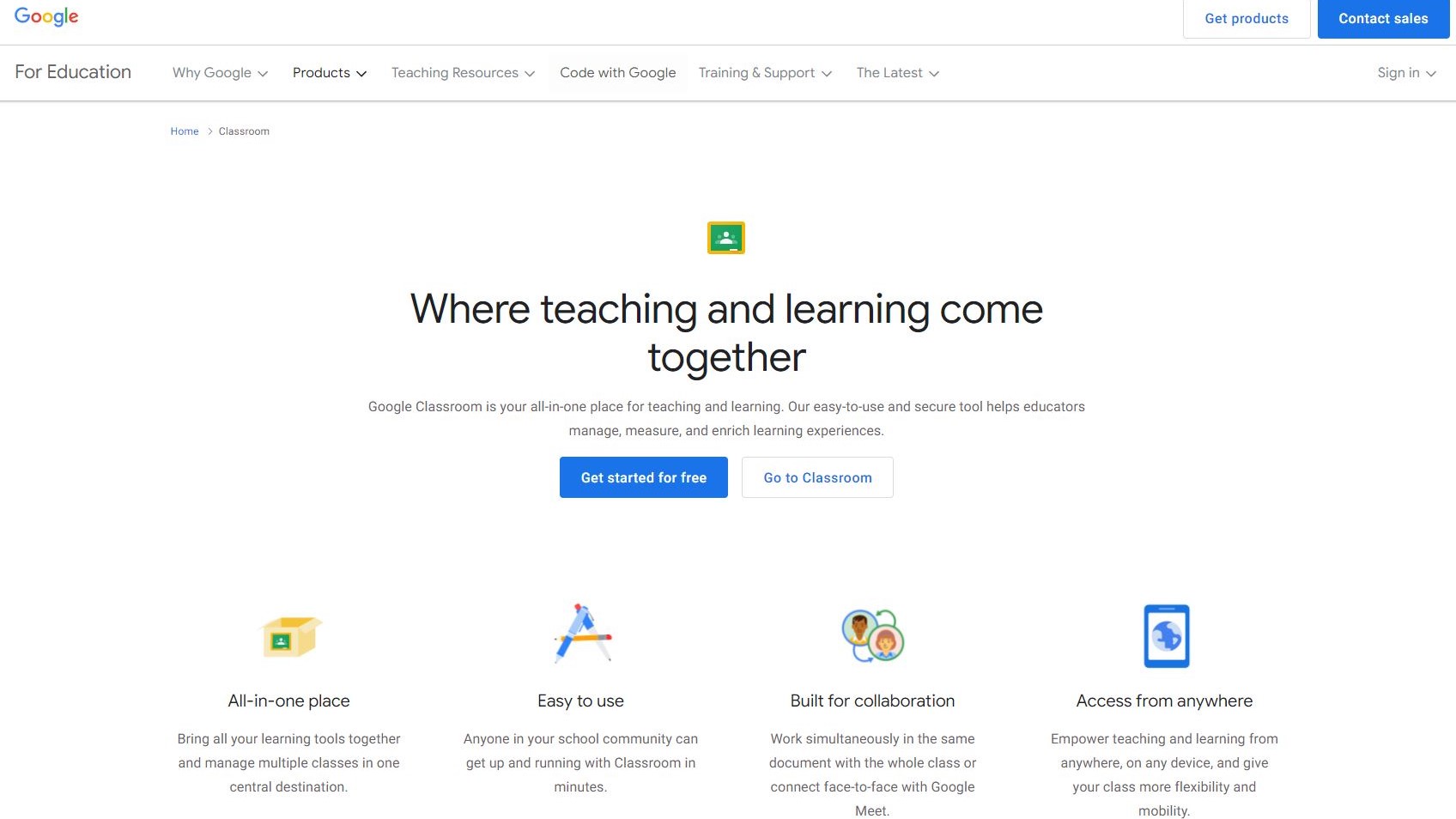
Best for Google types
Reasons to buy
+Clean interface that's easy to learn +Powerful media sharing tools +Integration with Google Workspace
Reasons to avoid
-No direct contact for support -Can't be licensed separately
Google Classroom offers a cloud based learning environment to enable remote education for learners from pre-K through the university level. We appreciate that it pulls together a number of Google tools, such as Google Meet, Google Drive and Google Docs all in one place to enable learning.
Teachers can put in assignments as all types of documents, including .doc and .pdf's, students get the notification, complete the assignment and submit it. Teachers then grade the assignment, keep a virtual gradebook and can give classroom style lectures via the Google Meet function.
Google offers this via several tiers of features, but we can appreciate that the free tier is plenty powerful for budget conscious school districts. The platform is also cross platform to allow learners to function with it with whatever their device of choice is, including laptops, Chromebooks, and both smartphone platforms- although the Android one garners complaints from the users.
Read the full review: Google Classroom

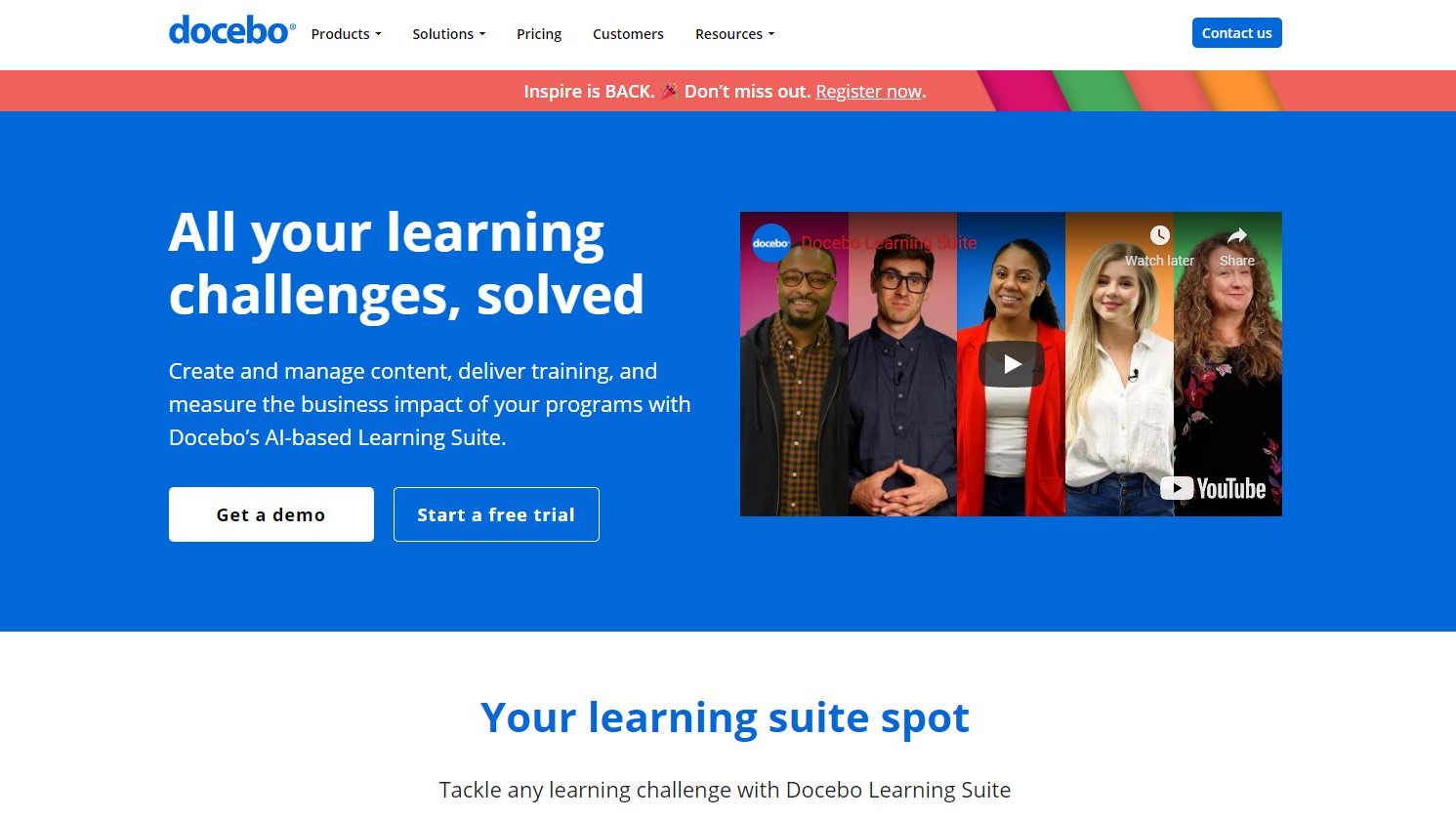
Best for enterprise
Reasons to buy
+Smartphone apps for iOS and Android platforms +Notable clients +Free trial & demo +User forum via Docebo Community
Reasons to avoid
-Very opaque pricing -Limited support options -Low rated apps -Few specifics on the website
Targeting the enterprise market, Docebo takes an AI approach to a learning platform with an impressive list of Fortune 500 companies that use its service. Incorporated under the Docebo Suite are multiple products to create content, deliver it, and also to measure the metrics of its impact. This style of product is well suited to onboarding, and retaining new employees.
There are some issues with the lack of support options as we would have liked to have seen some more direct choices, such as a direct phone number or a chat option. Also of concern is the completely opaque pricing as we could not even figure out the available tiers or options without direct company contact. However, users are sure to make good use of the robust interactions fostered by this service via the 'Docebo Community,' although this gets negated by the clunky, and low rated smartphone apps on both the Android and iOS platforms.
Read the full review: Docebo

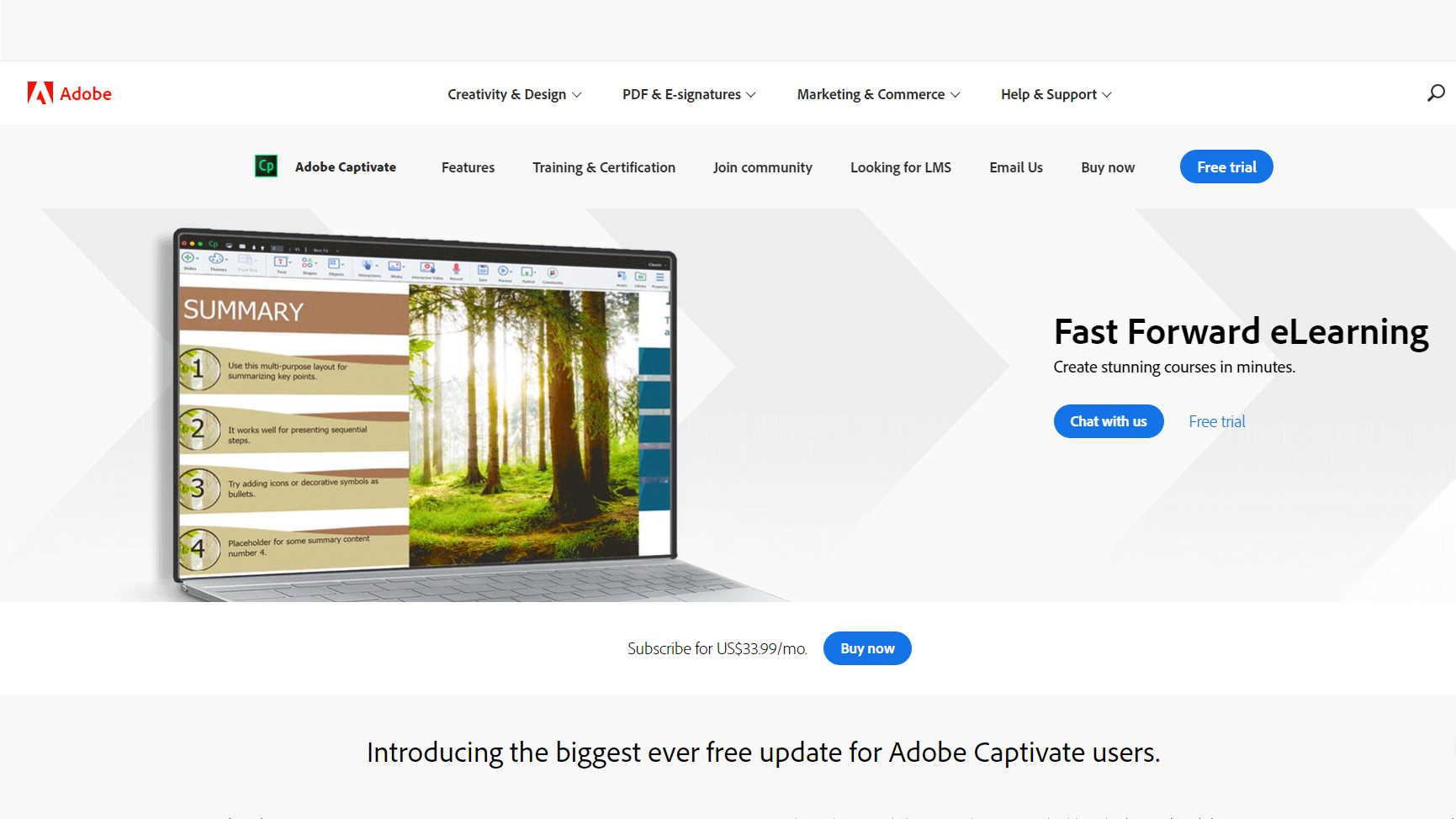
Best for professional project creation
Reasons to buy
+Free trial +Choice of acquisition options +In software image editing +Supports VR projects
Reasons to avoid
-Cancellation fee on monthly plan -Limited support options -Higher price
Adobe Captivate is a professional platform for creating learning content. This can be incorporated from a variety of sources, including images that this software can edit, screen captures that can be done automatically, and by importing PowerPoint presentations.
We are impressed with the support for VR projects, and users are sure to like the choice of acquisition options along with its use of templates to streamline project production, and provide consistency. Users do have issues with the stability of the app, the limited options for direct support and the cancellation fee for the monthly plan will undoubtedly irk some out there.
Quibbles aside, Adobe Captivate is a mature piece of software that has endured with good reason, and is well worth a closer look via the 30-day trial that is longer than most of its competitors.
Read the full review: Adobe Captivate

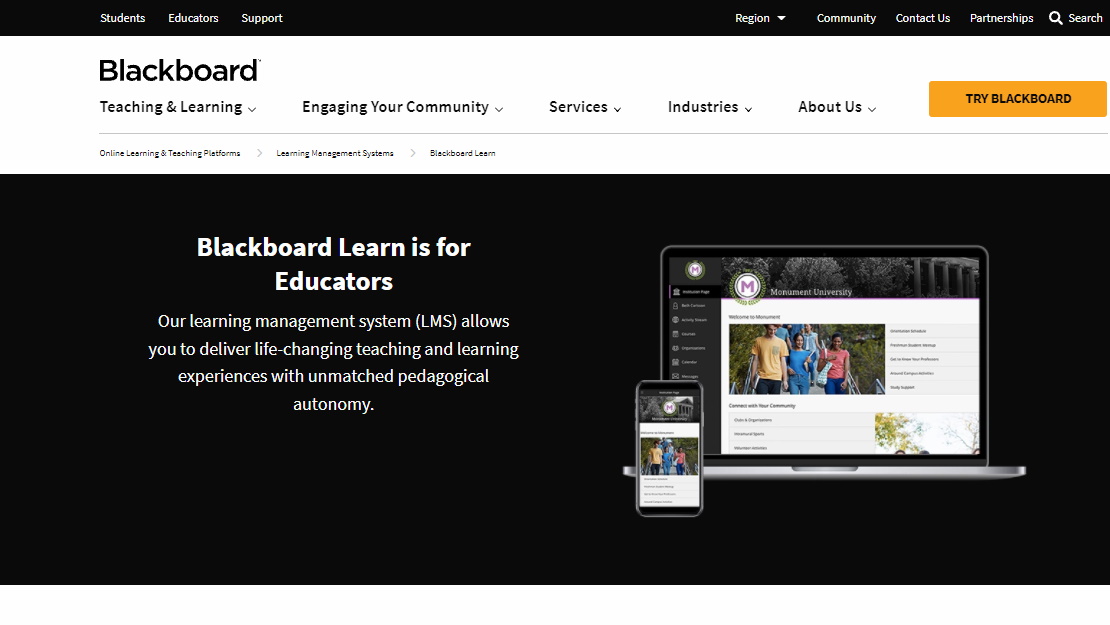
Best for multiple integrated tools
Reasons to buy
+Free month trial +Available smartphone apps +Trackable progress +Fosters student and teacher interaction
Reasons to avoid
-Lacks free tier -Opaque pricing
Blackboard Learn is a learning platform that is used for learners of all levels from pre-K to university and beyond such as in government and industry. It has some shortcomings such as the opaque pricing, the limited direct support options and the multiple bugs that users report in the apps, especially the Android version.
Balance that against the integrated tools that some competing solutions charge for, such as an plagiarism checker to check student assignments against. Also factor in the accessibility tool to be ADA compliant, and the other items to foster communication between students and professors, and the tracker to keep students on track with submitting their assignments. Additionally, the 30-day trial is longer than most others, and the iOS app is highly rated, so organizations that need a full fledged solution will see quickly why this learning platform enjoys its popularity.
Read the full review: Blackboard Learn

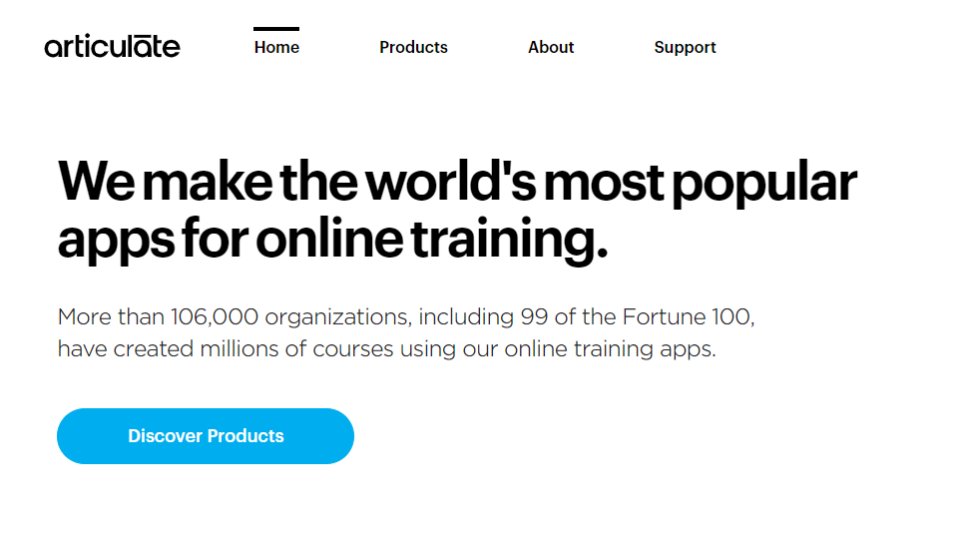
Best for upfront pricing
Reasons to buy
+Generous 60-day trial +Transparent pricing +Direct contact support options +Imports video content
Reasons to avoid
-Lacks advanced support options -Limited user reviews -No Android app
For those that are looking for some upfront pricing, Acorn LMS- unlike some of its competition- answers that need. Rather than keeping potential users in the dark, Acorn LMS is upfront offering both a tier without content and another with content The company also offers a flat fee for the first 100 users and an additional student fee for each user thereafter.
Beyond that, this platform has a number of strengths that impress us, such as the ability to make individualized student pathways via LinkedIn Learning content, the white label approach to foster customization of the site for consistent branding at an organization, and support for multiple tendencies allowing an administrator to easily manage multiple acorn LMS accounts via a single set of sign on credentials.
While nothing is perfect, and we should point out the lack of an Android app in the Google Play Store, the dearth of user reviews, and that there are no advanced support options such as a forum or a FAQ, overall it is an attractive package worth the 60-day free trial.
Read the full review: Acorn LMS

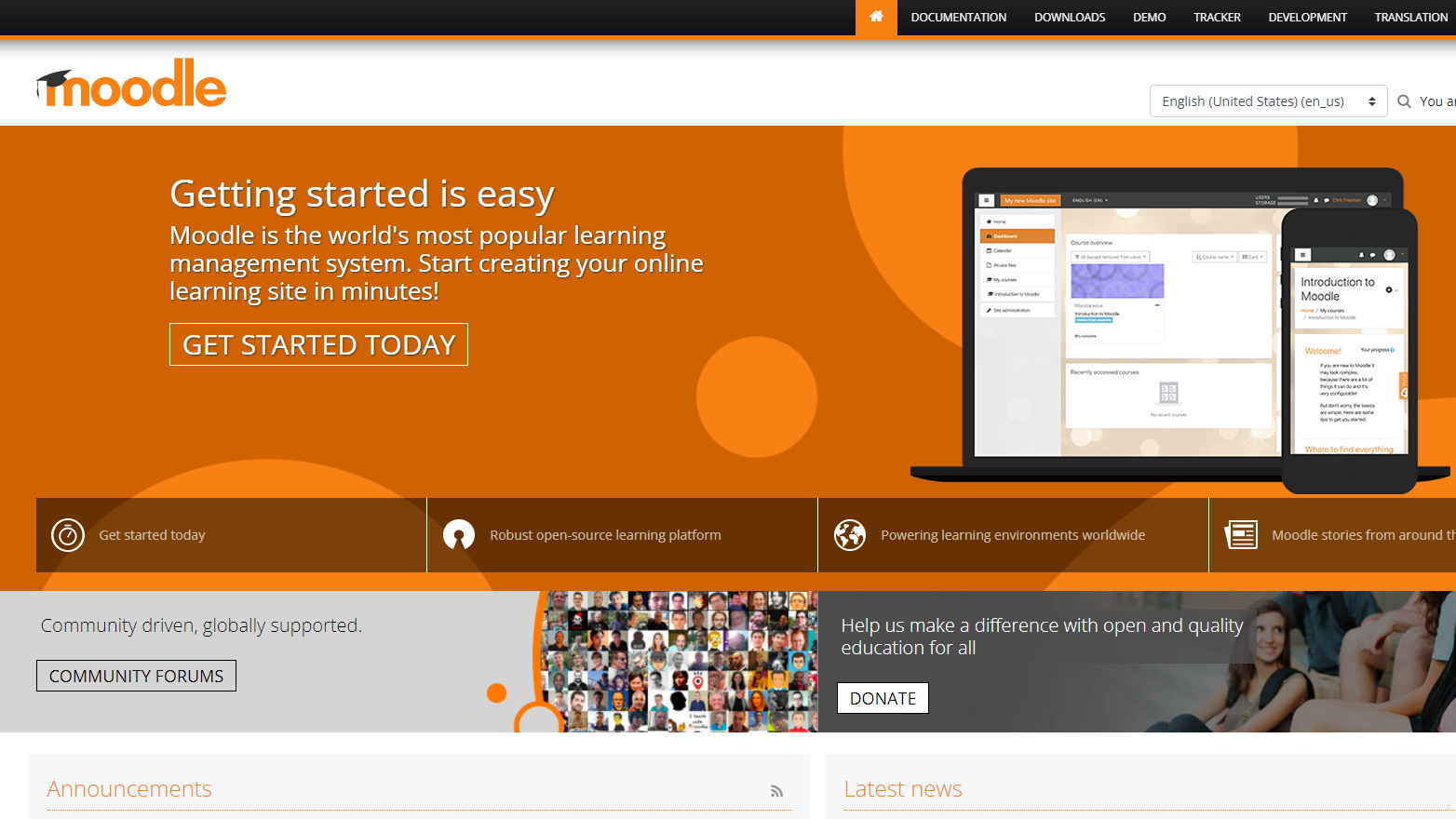
Best for open source
Reasons to buy
+Open-source +Free to use +Available smartphone apps +Included text editor
Reasons to avoid
-Limited support options -User reports bugs in mobile apps -Certified Service Provider may be needed at additional cost
While commercial software has its place, sometimes it is truly impressive what an open source project can achieve, such as in the case of Moodle LMS. This open source learning platform can be downloaded and used for free. While direct support is lacking (although an organization can engage one of 80 Certified Service Providers to remedy that deficit), there is still plenty here, including documentation such as guides on how to use this platform.
Learners and teachers are sure to like the expansive feature set, such as interaction with multiple choice questions in the content, an integrated text editor, and support for 3rd party cloud storage providers, such as DropBox to submit assignments. It is also multi-language capable, and supports open standards such as SCORM.
We also like that teachers can make comments on assignments, and the integrated all-in-one calendar. With so many features, it may be open source, but it hardly will feel like it, which explains why it has over 200 million users.
Read the full review: Moodle LMS


Best for expert online entrepreneurs
Reasons to buy
+30-day guarantee +Choice of tiers, including free tier +No transaction fees +Integrates website builder
Reasons to avoid
-No smartphone apps -Few reviews -Certificates issued are too basic -Missing direct support options
Thinkific is an online platform that has enjoyed meteoritic success as a relative newcomer to this space. It has useful functions, such as the ability for educators to build a website, and templates are provided to facilitate this for newcomers.
We also like that this platform can be used to issue certificates of completion. It is used worldwide, and can accept payments from learners signing up for courses from over 100 countries.
Some omissions, such as the lack of a direct phone number or email for support, and no smartphone apps for either Android or iOS show the immaturity of the platform. We also wanted to see more user reviews than what we found online. However, with a choice of tiers starting with a free one, and a track record that has already earned its experts over $650 million dollars, it is seriously hard to dispute.
Read the full review: Thinkific LMS
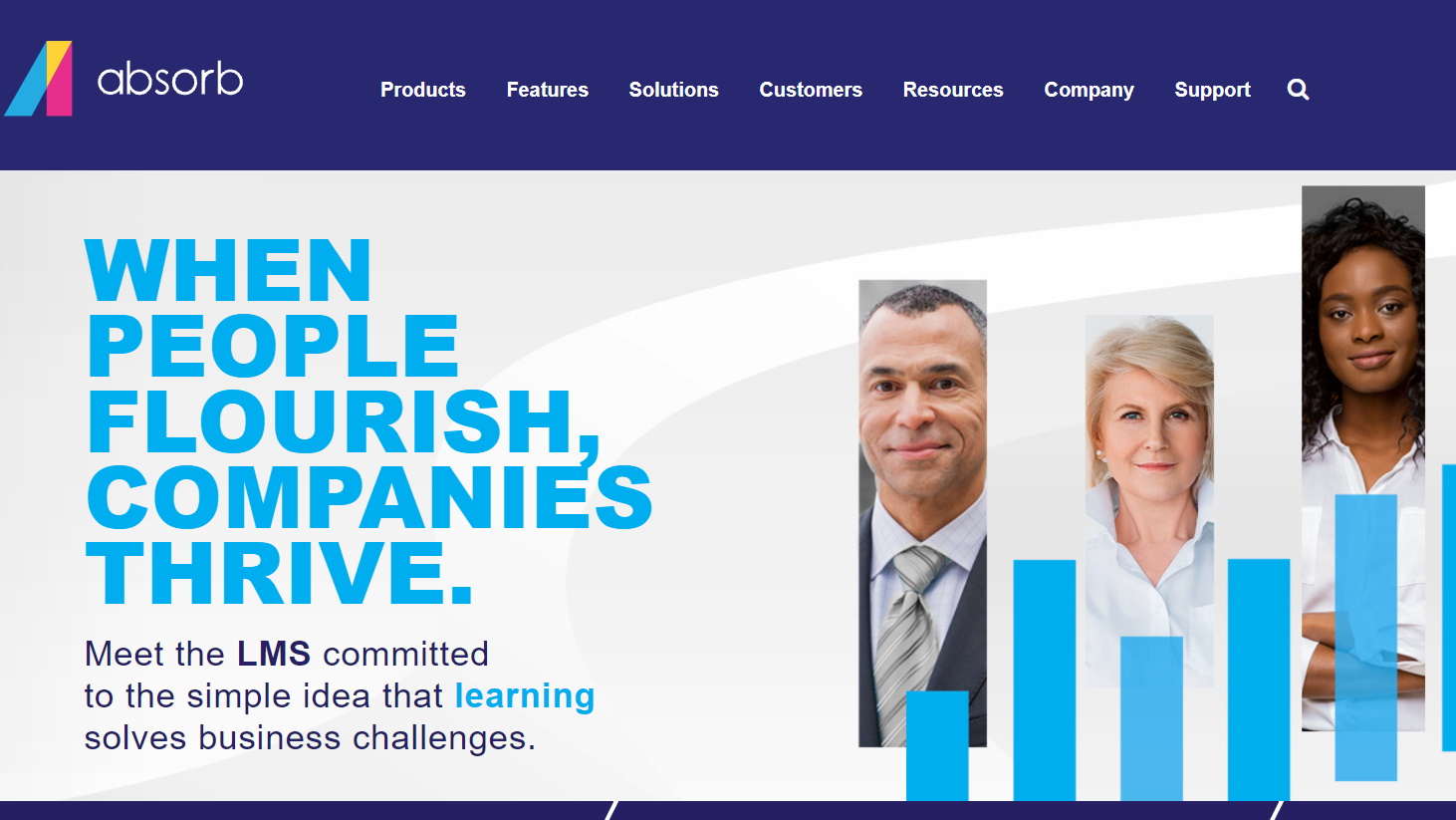
Best for social media
Reasons to buy
+Business focused +Variety of content supported +Integrate in polls and surveys +Smartphone apps for iOS and Android
Reasons to avoid
-Opaque pricing -High cost -Poorly rated apps -Additional cost for higher tier support
The Absorb LMS is a learning platform that focuses on business. It is also especially adept at social aspects, as it can easily integrate with corporate social media accounts.
We also like the social focus that continues on to allow learners to create social accounts on the platform. This then allows them to virtually interact with the other learners, and also display the awards and certificates that they accumulate for completed content. We also appreciate that certificates can be custom created, to be either downloaded or printed. However, some aspects frustrated us, such as the learning community that is not running yet, the opaque and ultimately high pricing, and the buggy smartphone apps on both the iOS and Android platforms that have users commenting they would be better off accessing content on a computer.
Read the full review: Absorb LMS

Best for streamlining project creation
Reasons to buy
+Choice of tier plans +Available smartphone apps +Extensive knowledge base +Free trial +Streamlines course creation
Reasons to avoid
-Semi-opaque pricing -Multiple features reserved for top plan -Few options for direct support
360Learning meets the challenge head on of streamlining the task of project creation. Users are sure to benefit from the integrated tools such as the video editor, the included templates that are branded as 'Cheat Sheets,' and the option to include ten different types of questions to test learners.
We also appreciate the free 30-day trial without credit card info, and the choice of tiered plans. However, we were less impressed that there are few options for direct contact, with some features reserved for the top plan (like support for course attachments), and that the Android app has a significantly lower rating than the iOS version. We also like the 'Collaborative Authoring' approach that lets even inexperienced users create a course in minutes, rather than months.
Read the full review: 360Learning

Best for app integration
Reasons to buy
+Free trial and free teacher plan +Highly rated smartphone apps +Automated grading +User support community
Reasons to avoid
-Opaque pricing -No app dark mode -Some sign on issues with apps -Lacks gamification
The Canvas LMS is used by top institutions worldwide, and it can boast it has over 6 million users with an over 90% satisfaction rate. Users are sure to be impressed that it integrates well with popular apps that students use, such as those from Adobe, Google Workspace and Microsoft Teams.
We also like the robust community forum, with thorough answers for common user issues, and the multiple communication options covering the spectrum from messaging (individually and as a group), to audio, and video. Some areas we would like to see improved would be support for gamification, and some transparency in the pricing. Teachers will also be pleased to see the support for automated grading via integration with SpeedGrader. While the opaque pricing is frustrating, we appreciate both the free 30 day trial, and also the lowest 'Teacher Tier' plan that is free long term for both teachers and students to allow for education of all.

What is an online learning platform?
An online learning platform is designed to support a student's learning. It is an online portal for education, and within it are multiple tools, all self-contained, to be a one stop resource for both students and teachers alike. Activities supported include lectures, assignments, quizzes, interactions between the teachers and learners as well as between the learners, and also the issuance of certificates. More advanced versions have features for course creation and to streamline the production and delivery of this content.
Online learning platforms vs Learning Management Systems
Both a learning platform, and a learning management system have the commonality to offer an environment for learning- but they are not the same. They are both useful pieces of tech to assist teachers and students for the management of learning.
A learning management system (LMS) is a software based app that facilitates a user making, designing and delivering their own self created course content. It can use either, or even both a website, or a mobile app for the creation and delivery of this content. LMS' tend to have a larger feature set to collaborate between teachers and students, and greater support to share files. A good example of an LMS is Blackboard.
Alternately, an online learning platform is a web based learning platform for a user to both design the online course, and then deliver this content to the audience of students. With an online learning platform there is the option for the creation of the content by the educator, but it can also incorporate previously created content. Online learning platforms focus more on the hosting of the education, with more basic tools for adding content. An example of an online learning platform is Adobe Captivate.

Online learning platform vs online course websites
There are plenty of ways to receive education online these days. This can include anything from casual content, such as an educational YouTube Video, to more structured online education such as a series of videos, and in some cases supplemental content in the form of text or a downloadable PDF. While there are many websites to educate and impart content, they are not all online learning platforms.
An online learning platform goes beyond what an online course website offers, with additional content to support the education. While it will incorporate the elements of an online course website, it will include additional tools, which will all be combined into a single platform. These tools can be communication methods such as live video or messaging, the opportunity to have assignments, and a record of certificates of completed courses. Overall, an online learning platform provides content that will be more in depth, and organized in a more formal environment to promote greater learning.
Open source vs free vs paid online learning platforms
Learning platforms can be divided into three different categories based on the pricing model.
The first is free, which has the benefit of no cost. There are both services that offer this at no cost, or ones that have a free tier, with reduced features, that then hope to upsell the service to a paid tier, and use the free offering as a gateway to getting a paying customer. A downside of these free offerings is that the support tends to be minimal to nonexistent, such as only via an online community board.
Open source is another nice option for a learning management system. In this model the software is distributed for no cost. This can allow an organization to then run this off of its own server. However, there are still costs to doing this, and then this must be supported internally. Another downside is that then the software may not be as updated as frequently, exposing it to security vulnerabilities.
The final option is a paid offering. While this does have an upfront cost, and in most cases for each additional learner, it does have plenty of advantages. This includes that the provider can host the software as a cloud service, requiring no in house personnel to provide support. Also, there may be options for phone support, and also more features.

Is Zoom an online learning platform?
Made popular by the pandemic with remote meetings becoming commonplace, Zoom is a video communications platform. Other popular choices in this category are GoToMeeting, and Google Meet. Zoom and other video communication apps are used for online audio and video meetings for business, casual and educational use. Each also supports additional content to support the virtual meeting, such as sharing screens, or chat within the app.
However, Zoom is not specifically an online learning platform. While it can certainly be used to support education, it has no way to give assignments, grade them, or do quizzes for example. As an online learning platform it falls pretty short, with plenty of better options out there. Also, many of the better online learning platforms offer video chatting within the platform so Zoom as a standalone is not needed as the functionality is already incorporated in.
What are the pros and cons of an online learning platform?
There are plenty of pros for an online platform. This includes the instant availability of the education, and that learners are not limited by geography and can attend class anywhere- even from the comfort of home. The learning is also self-paced, as it can accommodate a variety of learning styles and learner needs as it is more flexible. There is also the benefit that learners don't need to commute to the school reducing the cost and burden of education, which can also be a time saving benefit as well.
While there are certainly benefits, there are some downsides as well. Some students may prefer face to face learning with a teacher directly in front of them, that an online learning platform lacks. Also with no physical school to attend, there is less of a structured learning environment, which some learners may do better with. Furthermore, there is less or even no camaraderie between learners than at a physical school, which can all be part of the total educational experience, and is a missing component with an online learning platform.
What are the essential features of an online learning platform?
When choosing an online learning platform for your organization, be sure the choice is a good one. Here are some essential features to look for:
- Scalability: Nobody wants to outgrow their platform too soon, and have to transition to another one. Therefore, look for scalability that can grow as you need it to.
- Mobile presence: Today's learners want to be able to learn when on the move. Therefore, look for an online learning platform that has well rated apps for both the iOS and Android platforms, that are highly rated.
- Tools for authoring: A flexible platform allows for content creation that is easy to use. This can include tools for text editing, and also video capture and editing from within the platform to streamline production.
- Easy to use interface: Nobody likes to use a clunky interface, so look for an easy one to use, that is well presented, and won't distract or overwhelm users.
- Robust support: When the inevitable issues of a platform come up, users are going to need some help. Look for a platform that offers a variety of support choices, including options for direct support such as a direct email and phone number.
- We've featured the best online class sites
best video game designer online school
Source: https://www.techradar.com/best/best-online-learning-platforms
Posted by: tsenggasselve.blogspot.com

0 Response to "best video game designer online school"
Post a Comment